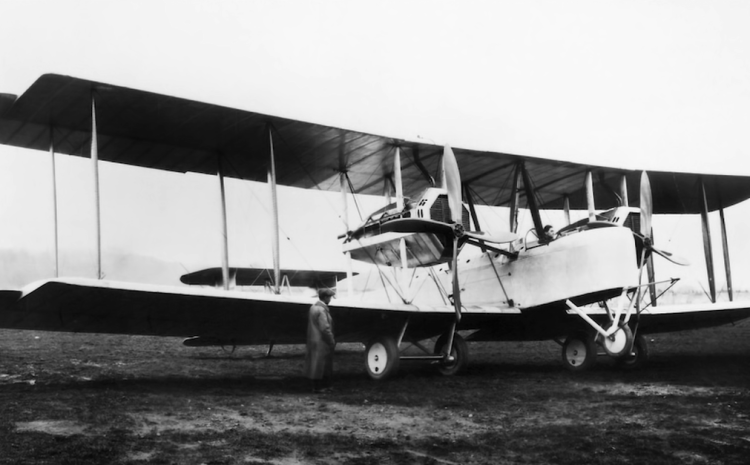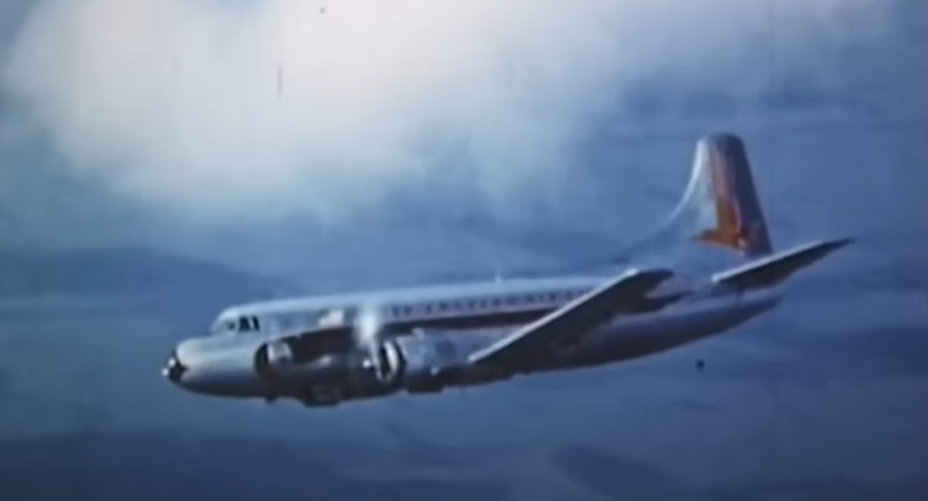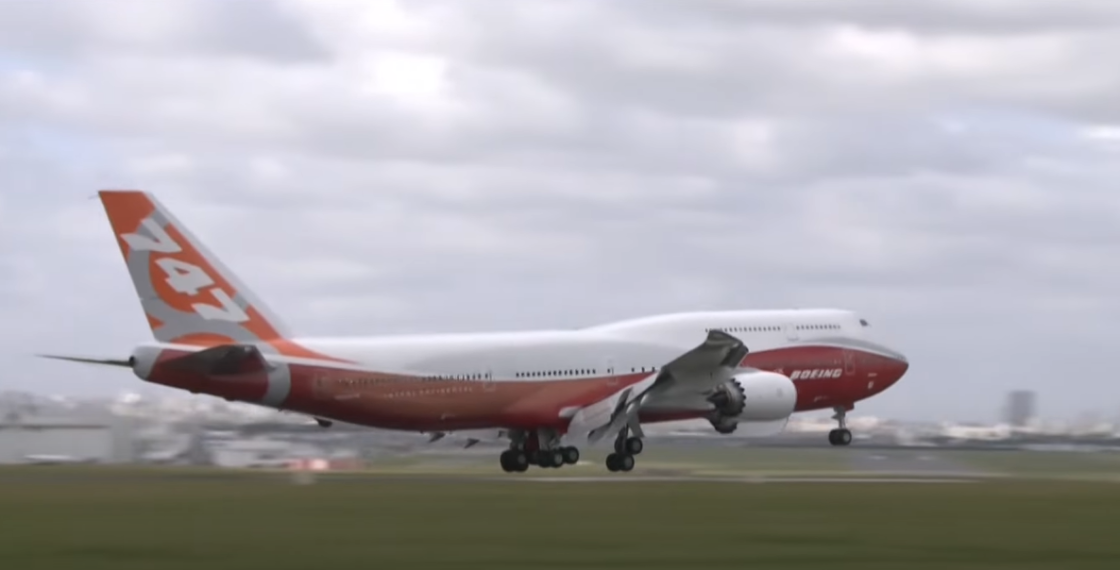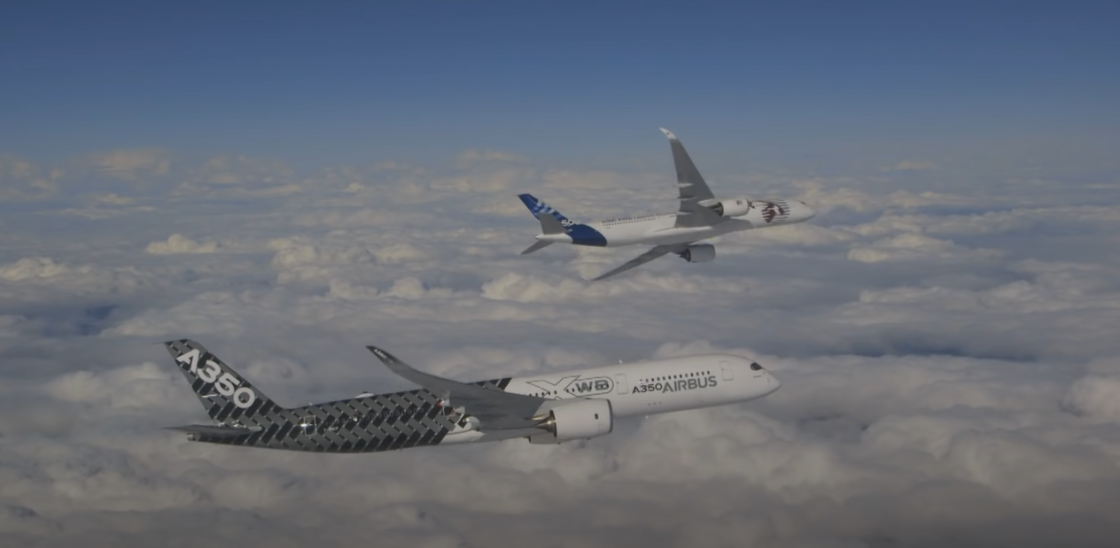Long-Range Aircraft: Beyond Borders and Across Continents

Long-range aircraft are the aviation industry’s answer to our desire for seamless connectivity over vast distances. Broadly, these aircraft are designed and built to cover at least 3,000 nautical miles non-stop. However, this definition isn’t carved in stone; it has evolved over time and continues to do so as technological advancements redefine what we perceive as ‘long-range’. Factors influencing an aircraft’s range include its fuel capacity, engine efficiency, aerodynamics, design, and weight, among other things.
Evolution of Long-Range Aircraft: A Historical View
World War I Era: The Dawn of Long-Range Aviation
During the World War I era, significant advancements in aviation paved the way for the development of long-range aircraft. Despite their simplicity compared to modern aircraft, these early flying machines laid the groundwork for future innovations. One notable aircraft from this period was the Vickers Vimy, a British heavy bomber primarily designed for combat missions. However, it was through peaceful exploration that the Vimy achieved remarkable fame.
In June 1919, a daring Vimy crew embarked on an unprecedented non-stop transatlantic flight, capturing the world’s attention and marking a pivotal moment in aviation history. The flight demonstrated the potential of long-range aviation and its ability to connect distant parts of the world like never before. To delve into the specifics of this era, let’s explore the key features of the Vickers Vimy and the groundbreaking transatlantic flight it undertook:
| Feature | Description |
|---|---|
| Purpose | Heavy bomber built for combat missions during World War I. |
| Range | Capable of long-distance flights, making it suitable for exploration purposes. |
| Endurance | Demonstrated remarkable endurance, crucial for sustained long-range missions. |
| Payload Capacity | Could carry a substantial payload, necessary for military operations and exploration. |
| Durability | Designed to withstand rigorous conditions, ensuring reliability during long flights. |
The Vimy’s legendary transatlantic flight was a milestone achievement that showcased the potential of long-range aviation. The flight was undertaken by two daring pilots, John Alcock and Arthur Brown. Let’s take a closer look at the remarkable journey they embarked on:
- Preparations: Alcock and Brown meticulously prepared for the historic flight, ensuring the Vimy was well-equipped for the challenging journey across the vast Atlantic Ocean. They planned for potential obstacles and navigational challenges, making safety a top priority;
- Non-stop Endeavor: On June 14, 1919, the Vickers Vimy took off from St. John’s, Newfoundland, aiming for Ireland. The flight spanned approximately 1,900 miles (3,000 kilometers) and lasted around 16 hours. Throughout the journey, Alcock and Brown faced treacherous weather conditions and navigational uncertainties, making their successful landing in County Galway, Ireland, all the more triumphant;
- Global Impact: The transatlantic flight garnered worldwide attention, establishing the Vimy and its crew as aviation pioneers. This achievement sparked enthusiasm for long-range aviation, inspiring further developments in aircraft design and exploration possibilities.
The Jet Age: Revolution in the Skies

The advent of the jet engine heralded a remarkable advancement in long-range aviation, propelling the world into a new era of faster and more efficient air travel. Leading the charge was the de Havilland Comet, a groundbreaking commercial jet airliner that took its maiden flight in 1952. Despite encountering initial setbacks, the Comet represented a significant leap forward in aviation technology and paved the way for the jet age. The following table highlights the key features of this pioneering aircraft:
| Feature | Description |
|---|---|
| Introduction | The first commercial jet airliner, revolutionizing air travel with jet propulsion. |
| Speed | Faster than its piston-engine counterparts, offering improved travel time for passengers. |
| Capacity | Carried a considerable number of passengers, enhancing the potential for long-range flights. |
| Technology | Utilized advanced jet engine technology, increasing efficiency and reducing fuel consumption. |
| Impact | Set the stage for the widespread adoption of jet aircraft in the commercial aviation industry. |
However, it was the Boeing 707 that truly transformed long-range aviation and democratized jet travel. Introduced in 1958, the Boeing 707 became an iconic symbol of the jet age and revolutionized the way people journeyed across the globe. With an impressive range of over 4,000 nautical miles and a cruising speed close to 600 mph, the Boeing 707 drastically reduced travel times and expanded the possibilities of international air travel. Let’s explore the key aspects of the Boeing 707 that made it a game-changer:
- Range: With its long-range capabilities, the Boeing 707 could fly non-stop on transcontinental and transoceanic routes, connecting distant cities and continents with unprecedented ease;
- Speed: The aircraft’s remarkable cruising speed significantly shortened travel durations, making long-haul flights more efficient and enjoyable for passengers;
- Passenger Comfort: The Boeing 707 offered improved in-flight amenities and spacious interiors, elevating the travel experience for those on board;
- Economic Impact: The 707’s efficiency and popularity drove significant growth in the commercial aviation industry, contributing to the expansion of global trade and tourism;
- Legacy: The Boeing 707’s success cemented its place in aviation history, influencing the design of future generations of commercial jetliners.
Widebody Revolution: The Arrival of the Jumbo Jet

In the 1960s, the aviation industry witnessed a monumental transformation with the emergence of widebody airliners, led by the iconic Boeing 747, known as the ‘Jumbo Jet’. The introduction of the 747 marked a significant leap in aviation technology and capabilities, forever changing the landscape of international air travel. This revolutionary aircraft, characterized by its distinctive hump, transcended the boundaries of conventional airliners, setting new standards for range, passenger capacity, and global connectivity. Let’s explore the groundbreaking features of the Boeing 747 in more detail:
| Feature | Description |
|---|---|
| Introduction | The Boeing 747, commonly known as the ‘Jumbo Jet’, debuted in 1969, representing a new era of widebody aircraft. |
| Size and Capacity | With its massive size and spacious fuselage, the 747 could accommodate a large number of passengers and cargo. |
| Range | Setting new records, the 747 boasted a maximum range of over 5,000 nautical miles, enabling long-haul flights. |
| Twin-Deck Design | The unique twin-deck configuration allowed for an upper deck lounge or additional seating, enhancing comfort. |
| Economic Impact | The 747’s capacity and efficiency significantly lowered the cost per seat, making air travel more affordable. |
The arrival of the Jumbo Jet revolutionized international travel, offering unprecedented capabilities and setting new industry standards. The widebody design and sheer size of the 747 not only transformed passenger comfort but also increased cargo capacity, enabling more efficient transportation of goods around the world. The aircraft’s immense range and fuel efficiency made non-stop flights across continents a reality, connecting distant corners of the globe like never before. The Boeing 747 became a symbol of human achievement, showcasing the boundless possibilities of engineering and innovation in the aviation industry.
Efficiency Matters: The Twin-engine Long-Range Aircraft

In the 1990s, the aviation industry witnessed a significant trend towards efficiency, prompting the development of high-performance twin-engine long-range aircraft. Leading this transformative shift were the Boeing 777 and the Airbus A330, both emblematic of a new era in aviation, where fuel efficiency and long-range capabilities were prioritized. These twin-engine marvels demonstrated that it was possible to achieve remarkable range without sacrificing efficiency. Let’s delve into the key features and capabilities of the Boeing 777 and Airbus A330:
Boeing 777 – Key Features:
| Feature | Description |
|---|---|
| Introduction | The Boeing 777, introduced in 1994, marked a paradigm shift in twin-engine long-range aircraft design. |
| Range | The later 777-200LR variant showcased a maximum range of over 7,000 nautical miles, ideal for ultra-long-haul flights. |
| Efficiency | The twin-engine configuration and advanced aerodynamics significantly reduced fuel consumption and operating costs. |
| Passenger Comfort | With a spacious cabin and improved in-flight amenities, the 777 prioritized passenger comfort on long journeys. |
| Technological Advancements | The 777 incorporated cutting-edge technology for navigation, communication, and safety, ensuring a reliable aircraft. |
Airbus A330 – Key Features:
| Feature | Description |
|---|---|
| Introduction | Airbus introduced the A330 as its twin-engine long-haul competitor to the Boeing 777, becoming a popular choice. |
| Range | Various models of the A330 offered ranges from 5,000 to over 7,000 nautical miles, catering to diverse routes. |
| Fuel Efficiency | The A330’s advanced aerodynamics and modern engines enhanced fuel efficiency, reducing environmental impact. |
| Versatility | The aircraft’s flexibility allowed for different cabin configurations, making it suitable for various missions. |
| Cockpit Innovation | Airbus equipped the A330 with state-of-the-art avionics, enhancing pilots’ situational awareness and safety. |
The Boeing 777 and Airbus A330 heralded a new age of twin-engine long-range aircraft, where airlines could achieve impressive non-stop flight capabilities while optimizing operational costs and minimizing environmental impact. These fuel-efficient widebodies opened up new possibilities for airlines to operate long-haul routes more economically, offering passengers increased comfort and convenience during their journeys. The success of the Boeing 777 and Airbus A330 paved the way for subsequent developments in twin-engine long-range aviation, continuing the pursuit of greater efficiency and sustainability in modern air travel.
The 21st Century and Beyond: The Age of Ultra-Long-Range (ULR) Aircraft

As the aviation industry entered the 21st century, a new era of travel emerged with the introduction of Ultra-Long-Range (ULR) aircraft. These technological marvels pushed the boundaries of long-distance flight, capable of covering more than 9,000 nautical miles non-stop, enabling airlines to connect distant cities and continents with unprecedented efficiency. Leading the ULR charge were the Airbus A350 XWB and the Boeing 777X, both redefining long-haul travel. Let’s delve into the key features and accomplishments of these extraordinary aircraft:
Airbus A350 XWB – Key Features:
| Feature | Description |
|---|---|
| Introduction | The Airbus A350 XWB, introduced in 2013, represents a new generation of ULR aircraft, focusing on efficiency. |
| Range | The A350-900ULR variant boasts an impressive range of 9,700 nautical miles, making it the epitome of ULR capability. |
| Fuel Efficiency | Advanced aerodynamics and composite materials contribute to reduced fuel consumption, making it environmentally friendly. |
| Passenger Comfort | The A350 XWB’s spacious cabin, quieter engines, and enhanced in-flight experience prioritize passenger well-being. |
| Technological Innovations | Cutting-edge avionics and fly-by-wire technology ensure superior performance and operational reliability. |
Boeing 777X – Key Features:
| Feature | Description |
|---|---|
| Introduction | The Boeing 777X, anticipated to enter service in the coming years, promises to be a game-changer in the ULR category. |
| Range | With a projected range of over 8,000 nautical miles, the 777-8 variant will set new records for extended non-stop flights. |
| Efficiency | The 777X incorporates advanced aerodynamics and fuel-efficient engines, reducing operational costs and emissions. |
| Passenger Experience | The aircraft’s larger windows, enhanced cabin pressurization, and spacious interiors aim to enhance passenger comfort. |
| Technological Advancements | The 777X integrates state-of-the-art systems for navigation, communication, and safety, setting new industry standards. |
The Airbus A350 XWB and the Boeing 777X represent a remarkable leap in long-range aviation, offering airlines and passengers unmatched possibilities for global travel. These ULR aircraft are not only fuel-efficient and environmentally friendly, but they also prioritize passenger comfort and safety, making long-haul flights more enjoyable and convenient. The Airbus A350-900ULR’s record-breaking non-stop flight from Singapore to New York stands as a testament to the achievements of ULR aircraft, redefining the concept of ultra-long-haul travel. As the aerospace industry continues to push the boundaries of technology, the age of Ultra-Long-Range aircraft is set to shape the future of air travel in ways that were once unimaginable.
Noteworthy Long-Range Aircraft of Today
While the aviation industry boasts a multitude of long-range aircraft, certain models stand out for their impressive capabilities. The following table highlights some of these aircraft:
| Aircraft | Manufacturer | Maximum Range (nautical miles) |
|---|---|---|
| A350-900ULR | Airbus | 9,700 |
| 777-200LR | Boeing | 8,555 |
| 787-9 Dreamliner | Boeing | 7,530 |
| A380-800 | Airbus | 8,000 |
| 747-8 | Boeing | 7,730 |
The Airbus A350-900ULR currently tops the list with its record-setting range of 9,700 nautical miles. However, the range is not the only factor to consider when evaluating the performance of these aircraft. Factors such as fuel efficiency, passenger capacity, cruising speed, and operational costs also play a crucial role.
Impact of Long-Range Aircraft on Society
The proliferation of long-range aircraft has profoundly impacted society, reshaping how we interact with the world.
- Globalization: By connecting distant parts of the globe, long-range aircraft have accelerated the process of globalization, promoting cross-cultural exchange and facilitating international trade and tourism;
- Time Efficiency: Long-range flights significantly reduce travel time, making it possible for business and leisure travelers to traverse vast distances quickly;
- Fuel Efficiency: Modern long-range aircraft prioritize fuel efficiency, which contributes to the broader goal of environmental sustainability in the aviation industry;
- Comfort: Passenger comfort is a key design consideration in long-range aircraft. These planes offer various amenities to enhance the passenger experience during long-haul flights, such as lie-flat seats, personal entertainment systems, and improved cabin air quality.
Long-Range Aircraft: Looking Towards the Future
In envisioning the future of long-range aviation, several key themes emerge.
- Sustainability: The aviation industry’s environmental impact cannot be overlooked. Therefore, there’s an industry-wide push towards greener alternatives, including biofuels, electric propulsion, and hydrogen fuel cells;
- Materials and Design: Advancements in materials science, such as the use of composites, can result in lighter, stronger, and more efficient aircraft. Additionally, new design paradigms, such as blended wing body designs, hold the promise of increased efficiency and range;
- Supersonic Travel: Companies like Boom Supersonic aim to revive supersonic travel, which could significantly reduce travel times for long-haul routes. However, challenges related to noise, efficiency, and economic viability must be addressed;
- Technological Innovation: Digitalization and new technologies such as AI and autonomous systems can also shape the future of long-range aircraft, possibly leading to pilotless planes.
Conclusion
Long-range aircraft have undeniably reshaped our world, connecting continents and cultures. As we look towards the future, these airborne marvels will continue to evolve, driven by the dual engines of necessity and innovation. This will redefine the way we experience the world, leading to new paradigms of travel, commerce, and human interaction.
FAQ
As of 2023, the longest commercial flight is between Singapore and New York, operated by Singapore Airlines using the Airbus A350-900ULR, covering a distance of 8,285 nautical miles non-stop.
The longest non-stop flight ever recorded was a demonstration flight by Boeing, using a specially modified 777-200LR. The flight flew eastward from Hong Kong to London, taking a longer route over the Pacific, America, and the Atlantic. It covered a distance of about 11,664 nautical miles in approximately 22 hours and 42 minutes.
For ultra-long-haul flights, airlines typically employ multiple pilots for a single flight. The pilots work in shifts, ensuring that they can rest and sleep during the flight. The aircraft usually have special rest compartments for the crew.
Various alternative fuels are under consideration for future long-range aircraft, including biofuels, synthetic fuels, hydrogen, and electricity.
Companies like Boom Supersonic are working on bringing back supersonic travel, aiming to offer speeds akin to the Concorde but with better efficiency and reduced noise. However, several challenges need to be overcome before supersonic travel can be commercialized widely.